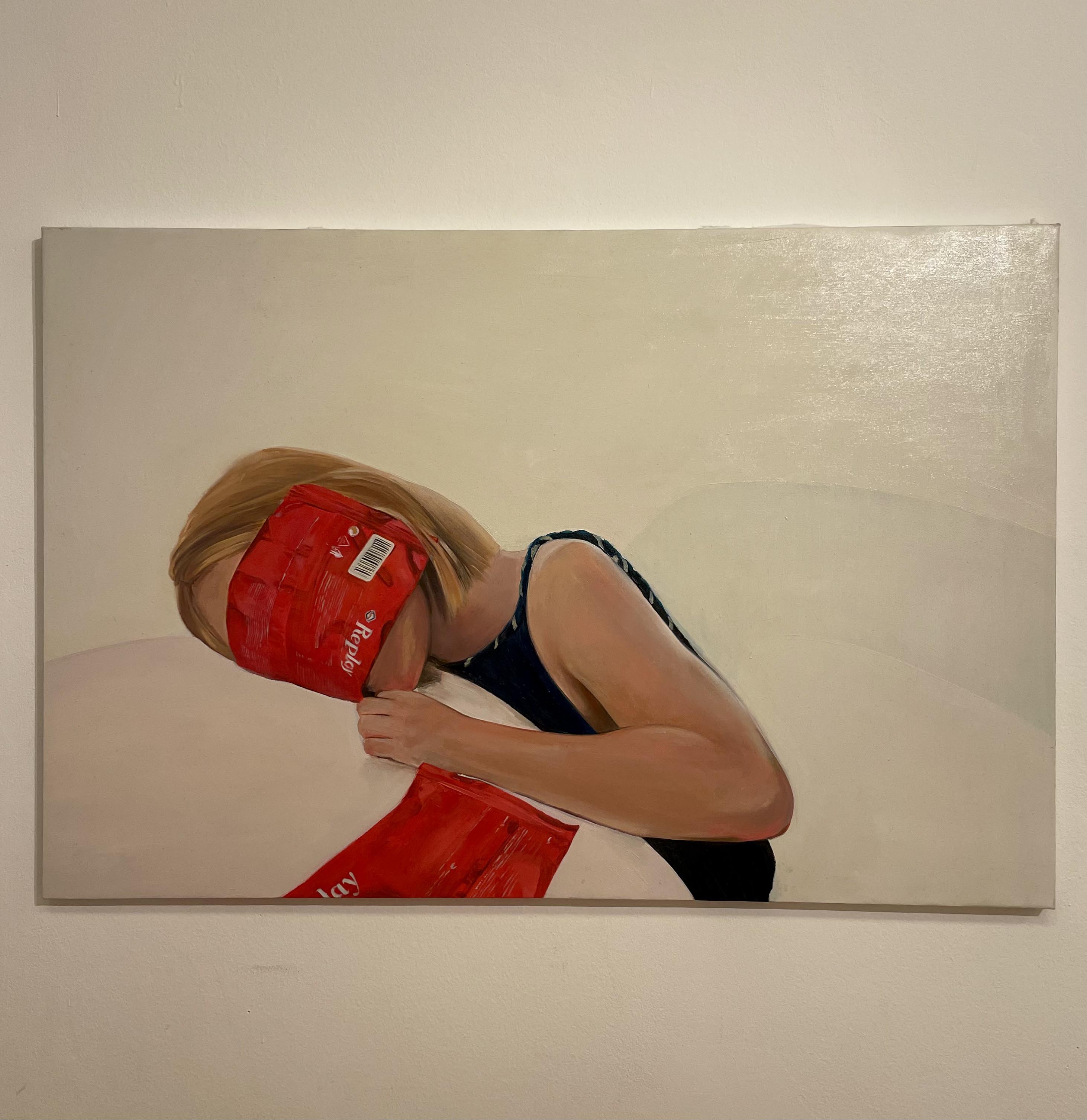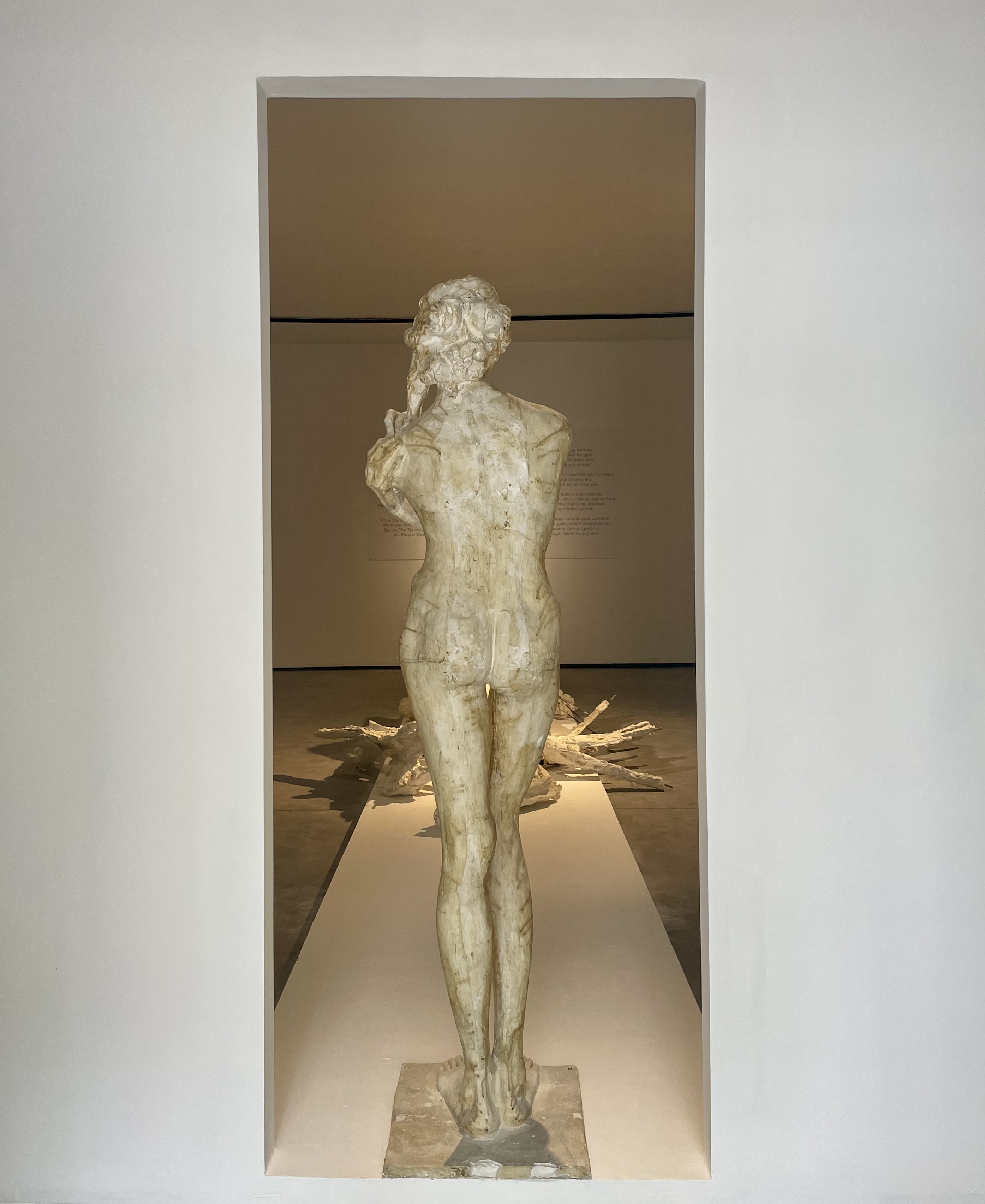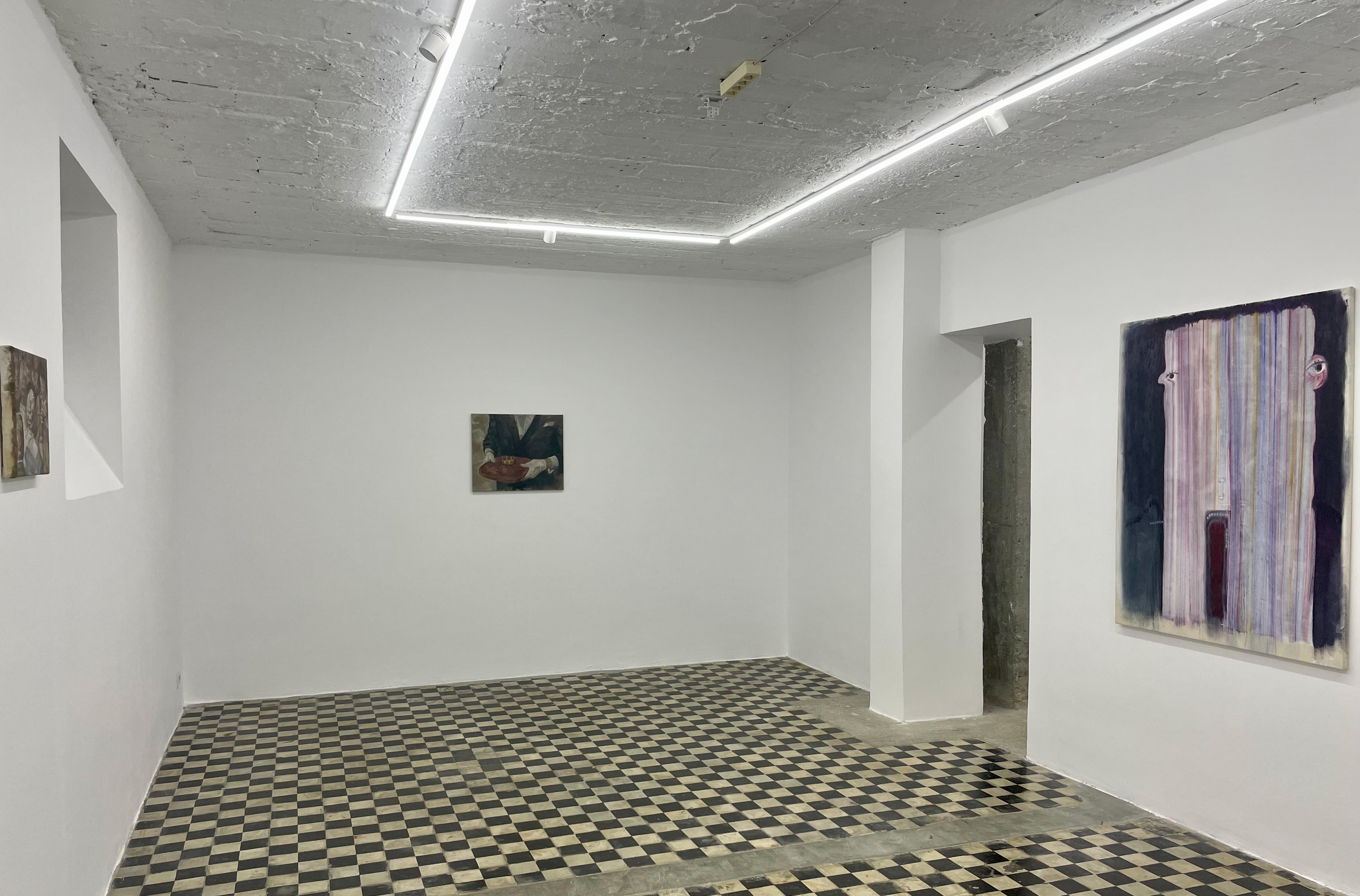
Exhibition / Wilhelm Scheruebl / “Mountains and water and blossoms and birds” / Zeta Gallery / 24th of September – 8th of October 2019 / Tirana
On September 24th – October 8th 2019, Zeta Gallery opens its doors to the exhibition “Mountains and water and blossoms and bird” by the Austrian artist Wilhelm Scheruebl’s. The name of the exhibition brings to mind nature landscapes. Whether the reflection is complete or partial, lifelike or symbolic, nature maintains its dominance in the display area of the exhibition. Light, makes the artist to think carefully; as light is seen as a source of comprehensive development for all life, including the human mind; light is a crucial indicator of world knowing and knowledge enrichment, and all of this thanks to nature’s transformative actions.
The mountains, more precisely their ridges, come to the exhibition through an installation with Albanian qeleshe (felt cap); water through small silver marbles; flowers are present naturally, but also through the artistic reflection, the drawing; whereas the bird is the national bird-symbol of the country visited by the artist in question.
The rugged map of Albania presents all of the locations he stopped on his cross-country journey, a journey also reflected by the installation corner with bills and curatorial exhibit writing, coloured by the dense net technique through which penetrating light makes visible only a percentage and the density of colour on the rest of the surface covers what we will no longer remember, perhaps because of the lack of strong footprint in us, perhaps because of the time flying by.
The artist wants to point out that all matter, all life is developing and consequently, transformation is inevitable. The presence of natural flowers also transforms the exhibition into an environment that changes from moment to moment, because this is not just an artistic setting. Thanks to the flowers, the exhibition constantly needs water, one of the essential components of life.
The curatorial writing on the exhibition itself states: “It is important that every type of matter is constantly in the process of being transformed. This is evident everywhere in the cycles of nature, from changing seasons to the definite end of our bodily being. A plant can testify for this constant cycle; it represents the seasonal cycle, from seedling, to flowering, to seed production, up to the formation of new soil from the lifeless plant material.”
* Wilhelm Scheruebl Was born in Radstadt, Austria (1961). He studied at the Akademie der bildenden Künste Wien (1985) where he received his diploma (1990). His works have been shown at: Gallery M+, Bratislava (1991); Gallery A4, Wels (1992); Gallery 5020, Salzburg (1993); Institut Francais de Vienne, Wien (1994); MAK, Museum für angewandte Kunst, Wien (1997); ACP Gallery, Peter Schuengel, Salzburg (1998); Duff House, Banff, Schottland (2000); Kunstverein Rosenheim, Rosenheim (2001); Rupertinum Salzburg, Salzburg; Oberösterreichische Landesgalerie, Linz (2004); Gallery Traklhaus, Salzburg; Lenbachhaus Museumsplatz, München (2005); Knoll Gallery, Wien; Knoll Gallery Budapest (2006); Haus der Herren zu Kunstat, Brünn; Kulturzentrum bei den Minoriten, Graz (2007); Im Pavillon, Wels (2008); Galeria Eugen Lendl, Graz; Museum Waidhofen; Knoll Gallery, Wien; Städtische Gallery, Rosenheim; allerart, Bludenz (2009); Museum Stift Admont; Gallery artdepot, Innsbruck (2013); Gallery Eboran, Salzburg (2014); Salzburg Museum, Salzburg; Kunstraum St. Virgil, Salzburg (2015); Gallery artdepot, Innsbruck; MQ Artbox, Wien (2016); Kunsthaus Nexus, Saalfelden (2019).
***
Ekspozitë / Wilhelm Scheruebl / “Malet dhe uji dhe lulet dhe zogjtë” / Galeria “Zeta” / 24 shtator – 8 tetor 2019 / Tiranë
Galeria “Zeta” hap në datat 24 shtator – 8 tetor 2019 ekspozitën “Malet dhe uji dhe lulet dhe zogjtë” të artistit austriak Wilhelm Scheruebl. Që në emërtim të ekspozitës ndërmendet pamja natyrore. E plotë a e pjesshme, në pasqyrim besnik apo simbolik, natyra është mbizotëruese në hapësirën paraqitëse të ekspozitës.
Të menduarit shqyrtues tek artisti zë fill nga drita; drita si burim zhvillimi gjithëpërfshirës për jetën, përfshirë këtu edhe mendjen njerëzore; drita si tregues vendimtar për njohjen e botës, për pasurimin e dijes, sigurisht falë veprimeve shndërruese kudo në natyrë.
Malet, më saktë kreshtat e tyre, vijnë në ekspozitë përmes instalacionit me qeleshet shqiptare; uji përmes rruzujve të vegjël të argjendtë; lulet janë të pranishme vërtetësisht, por edhe përmes pasqyrimit artistik, vizatimit; kurse zogu është shpendi-simbol kombëtar i vendit të vizituar prej artistit në fjalë.
Harta e thyer e Shqipërisë paraqet të gjitha vendndalimet e tij në udhëtimin kryq e tërthor saj, udhëtim të cilin e pasqyron edhe këndi instalativ me fatura dhe shkrime kuratoriale ekspozitash, ngjyrosur me teknikën e rrjetës së dendur përmes së cilës drita depërtuese bën të dukshme një përqindje të caktuar, kurse dendësia e ngjyrës në pjesën tjetër të sipërfaqes mbulon atë çfarë nuk do të na kujtohet më, ndoshta për shkak të mungesës së gjurmës së fortë te ne, ndoshta për shkak të kohës që rrjedh.
Artisti dëshiron të vërë në pah që çdo lëndë, çdo jetë është në zhvillim e sipër dhe, për pasojë, shndërrimi është i pashmangshëm. Prania e luleve të vërteta e shndërron edhe ekspozitën në një mjedis që ndryshon nga çasti në çast, sepse aty nuk ka vetëm frymëmarrje artistike. Falë luleve, ekspozita ka nevojë vazhdimisht për ujë, një prej përbërësve themelorë të jetës.
Vetë shkrimi kuratorial mbi ekspozitën shpreh: “E rëndësishme është që, çdo lloj materiali është vazhdimisht në një proces shndërrimi. Kjo është e dukshme kudo në ciklet e natyrës, nga ndryshimi i stinëve deri në fundin e caktuar të qenies sonë trupore. Një bimë e dëshmon këtë qëndrim të vazhdueshëm; ajo përfaqëson ciklin stinor, nga fidani, te lulja, te prodhimi i farave, deri te formimi i tokës së re nga lënda bimore e pajetë.”.
* Wilhelm Scheruebl ka lindur në Radstadt, Austri (1961). Studioi në Akademinë e Arteve të Bukura në Vjenë (1985), ku edhe u diplomua (1990). Puna e tij është paraqitur në: Galeri M+, Bratislavë (1991); Galeri A4, Uels (Wels) (1992); Galeri 5020, Salzburg (1993); Instituti francez i Vjenës, Vjenë (1994); MAK, Museum für angewandte Kunst, Vjenë (1997); ACP Galeri, Peter Schuengel, Salzburg (1998); Duff House, Banff, Skoci (2000); Kunstverein Rosenheim, Rosenheim (2001); Rupertinum Salzburg, Salzburg; Oberösterreichische Landesgalerie, Linz (2004); Galeri Traklhaus, Salzburg; Lenbachhaus Museumsplatz, Mynih (2005); Knoll Galerie, Vjenë; Knoll Galeri, Budapest (2006); Haus der Herren zu Kunstat, Brünn; Kulturzentrum bei den Minoriten, Graz (2007); Im Pavillon, Uels (Wels) (2008); Galeria Eugen Lendl, Graz; Museum Waidhofen; Knoll Galeri, Vjenë; Städtische Galeri, Rosenheim; allerart, Bludenz (2009); Museum Stift Admont; Galeri artdepot, Innsbruck (2013); Galeria Eboran, Salzburg (2014); Salzburg Museum, Salzburg; Kunstraum St. Virgil, Salzburg (2015); Galeri artdepot, Innsbruck; MQ Artbox, Vjenë (2016); Kunsthaus Nexus, Saalfelden (2019).








